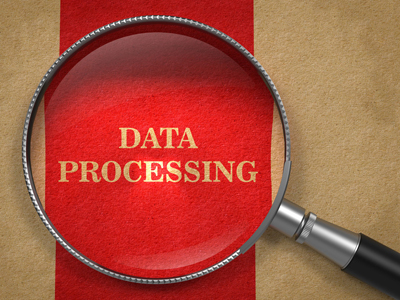
Before processing and extracting useful information from a mass of data, it is important to determine whether the collected information pertains to the specific purpose it is intended to serve. Processing of insurance claims, checks, images, and forms are activities involving everything from data capture, digitization, structuring and restructuring, retrieval of data to modification, reformatting, and indexing.
Commercial data processing makes it easier to control and process the information that is central to make businesses function smoothly. The action of Airport Operating System in the airport is a good example for explaining such a system. The system is designed to capture information regarding the scheduling of flight landings and departures as well as operational flight information. Proper management of processed data helps in:
- Managing activities in the airport such as the allocation of aircraft maintenance stands, boarding gates and check-in desks
- Alerting the crew who fuel and maintain the aircraft
Challenges of Data Processing
- Collecting data from different systems and groups within the organization, and that too in different formats is challenging. Extraction of useful information out of data can be meaningful, only if the raw data collected suits the purpose well.
- Making sense of the available data is another serious problem associated with data processing. Drawing faulty conclusions from data can lead to unexpected and disastrous consequences. Databases with poor description of information often increase the complexity of the system. This can affect the audit of information systems, systems integration, new development or makeover of legacy systems.
- The problems associated with large databases relate to those involving structure as well as with the data itself, which could be complex. Relational database management systems address such issues using SQL query optimization.
- Lack of the right tools and architectures to process the captured data sometimes pose challenges. The major benefit of incorporating data management tools is that they provide the ability to standardize procedures and services, and to organize data in ways that it can be searched, browsed, navigated and analyzed.
How Business Data Processing is Performed
Data processing procedure starts by identifying the type of data required and location where it resides. For example, data related to customer sales may exist with different systems across the organization. Upon identifying the required data, it is extracted, cleansed, and transformed into a usable format before it is stored in the data warehouse.
Benefits of Data Processing
- Big data crunching and analytics helps detect and prevent financial fraud, calculate risks of large investments, implement high-value marketing strategies and improve revenue.
- Processing of data helps to identify target customers and their needs and preferences.
- Predictions generated from social media data, weather forecasts and web search trends help retailers optimize their stocks.
- Electronic data processing (EDP) system is far more advantageous than traditional systems. Once implemented, it reduces the cost of managing data by a significant margin (over time).
- Digitally processed information can prevent or eliminate repeated entries due to mistakes in manual data entry.
Warehouse stock monitoring and logistics is one the most common examples for EDP system. With incoming orders, data is inputted and processed. Then it is transformed into a picking order and transmitted to the warehouse.
Better decision making is possible by understanding how information is tied together and how each piece in the data puzzle interrelates to form the big picture. Proper analysis of data or information is a key component for many organizations struggling to gain a competitive advantage. It is also important in educational and healthcare settings where accurate and updated data is absolutely necessary.



